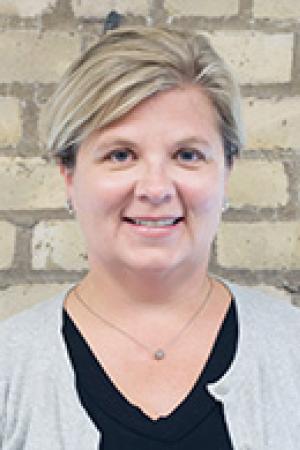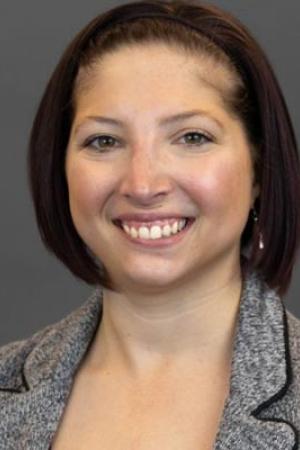Undergraduate academic advising
CEHD advisors meet with you regularly so you're supported from orientation through graduation. Make an appointment with your CEHD advisor to:
- Explore potential majors and opportunities within different majors.
- Ask questions about registration and completing your degree.
- Find out about campus life and University resources.
Appointments
We offer in-person appointments as well as appointments over Zoom or phone. Call CEHD Student Services at 612-625-3339 to schedule an appointment with your advisor, or schedule an appointment online through their individual profiles. Check with your advisor for their weekly availability.
Drop-in advising is available in-person or over Zoom.
- Extended drop-in advising during first week of each semester (Tuesday – Friday) from 8 a.m. - 4 p.m.
- Ongoing drop-in advising Fall 2024 & Spring 2025: Monday-Thursday from 2-4 p.m.
- Stop by 360 Education Sciences for in-person drop-in advising
- Call 612-625-3339 or email cehdinfo@umn.edu for drop-in advising information via zoom.
Not sure who is your advisor? Log in to MyU and click on the Academics section.
Location
CEHD Student Services
360 Education Sciences Building
56 East River Road
Minneapolis, MN 55455
(get directions on Campus Maps)
Hours: 8 a.m. - 4 p.m., Monday-Friday
Drop in advising
A 10-15 minute session for topics like answers to short questions, signatures on forms, time-sensitive matters, or a quick review of classes.
Call or email
Best for asking your advisor about general requirements, policies, forms, or resources.
Phone: 612-625-3339
Email: cehdinfo@umn.edu
Individual appointments
Typically 30 minutes and need to be scheduled at least one day ahead of time. Typical topics include exploring majors, registration planning, identifying personal goals, and support for any obstacle in your way.
Student resources
Get support in balancing your academic, personal, and social life. CEHD advisors have put together a list of on-campus resources to support you.
Are you a current CEHD student who is ready to declare your major?
Make the most of your experience in CEHD! Our advisors and career counselors created a first-year/sophomore roadmap and a preparing for your major/final year roadmap to help you plan your college experience and prepare for your future.
Return to the University
Your first step in being readmitted to the U of M and CEHD is to contact CEHD Student Services at 612-625-3339 or email cehdinfo@umn.edu.
Academic support
Your academic advisor is a good place to start when you have a question or are looking for resources on campus. In addition, these resources are available to all students at the University of Minnesota.
TRIO Student Support Services advisors
Phone | 612-625-0772
Email | trio@umn.edu
Hours | 8 a.m.- 4 p.m., Monday-Friday
Location
TRIO Student Support Services
40 Education Sciences Building
56 East River Road
Minneapolis, MN 55455
CEHD frequently asked questions
What is an academic advisor?
CEHD utilizes a dual advising model. All students, including TRIO Student Support Services (SSS), are assigned an academic advisor who supports them from orientation through graduation. Additionally, once students declare their CEHD major, they receive guidance from a major advisor. If you have been admitted to the University Honors Program (UHP), you will be assigned a UHP academic advisor in addition to your college advisor.
Academic Advisors support student success from orientation to graduation. Students can meet with their academic advisor to discuss….
- Navigating campus and connecting with campus resources
- Academic, career, and personal goals
- Potential majors, minors, and undergraduate certificates
- Course registration and degree requirements
- Learning abroad
- Personal and academic challenges
- Getting involved on campus
- Academic skill-building
- Post-graduation planning
More information:
- CEHD and TRIO SSS Advising Syllabus
- CEHD Academic Advising
- TRIO SSS
- University Honors Program Advising
- UMN Advising
What is a departmental/major advisor?
Once admitted to your major, you will work more closely with a professional staff member within your major department—known as a departmental or major advisor—for academic planning. Departmental/Major advisors can assist you with major course questions and planning, applied experiences in your major, research opportunities in your major, focused electives, or supporting program planning and study abroad planning.
More information:
- OLPD Departmental Advising (BME & HRD majors)
- School of Kinesiology Departmental Advisors (KIN, PAHP, & SMGT majors)
- Curriculum and Instruction Departmental Advisor (El Ed major)
- Institute of Child Development Departmental Advisor (Early Childhood major)
- Educational Psychology Departmental Advisor (SPED majors)
- Family Social Science Departmental Advisor (FSOS major)
- School of Social Work Departmental Advisor (YOST major)
How do I find the name of my assigned advisor(s)?
To find out who your assigned advisor(s) is/are, see the "Academics" tab in MyU Portal and look for the name under "My Advisor(s)."
More information:
How do I schedule a CEHD or TRIO SSS academic advising appointment?
- To schedule an appointment with your CEHD academic advisor:
- Call 612-625-3339
- Email cehdinfo@umn.edu
- Stop by the CEHD SS Office at the Education Sciences Building, room 360
- Email your advisor directly or go to their webpage and click on their individual advising appointment link
- To schedule an appointment with your TRIO Student Support Services (SSS) academic advisor:
- Call 612-625-0772
- Email trio@umn.edu
- Stop by the TRIO SSS Office at the Education Sciences Building, room 40
- Email your advisor directly or go to their webpage and click on their individual advising appointment link
- Honors students should email their honors academic advisor or call 612-624-5522 to schedule an appointment to discuss questions or concerns related to honors requirements
- If you have been admitted to your major, you may visit, email, or call the academic department’s main office to determine how to schedule an appointment with your departmental/major advisor. See above for more information on departmental advising.
- There are multiple types of appointments, including: In-person, Zoom, or Phone call.
What is drop-in academic advising?
A 10-15 minute session for topics like answers to short questions, signatures on forms, time-sensitive matters, or a quick review of classes.
How do I find out my registration time?
Log into MyU and select the Academics tab. Click on the Registration link on the top of the landing page. This will take you to your assigned time for registration. Note: this information is not available until a few weeks before the registration queue begins.
More information:
I have a “HOLD”. What do I do?
A hold prevents you from making changes to your record until you complete an action. There are many types of holds which may affect registration. How to remove a hold depends on which office has placed it. Holds are visible on MyU in the top right corner. One Stop offers a guide to viewing and resolving holds. Be mindful of the “effective term” for the hold, as this will determine your eligibility to register. The following holds are specific to academic advising:
- College Advisor Approval Hold (OA): To have this hold removed, you must attend a 30 minute appointment with your college or TRIO SSS academic advisor. Note: After first-year orientation the hold can be moved by connecting with your advisor by email to discuss desired registration changes.
- Major Declaration Hold (MDR): To have this hold removed, you must be admitted to a major in CEHD or transfer to another college at the University of Minnesota. If admission to your major is not possible, you should meet with your college academic advisor to discuss this hold and your plan.
- Academic Warning Hold (PB): To have this hold removed, you must schedule an academic warning appointment with your college or TRIO SSS academic advisor. During your appointment, be prepared to discuss the barriers you experienced, your goals for the next academic term, and changes you will make or have made to improve your academic record.
More information:
A course I need is full. What should I do?
Check to see if there is a wait list available and add yourself to the wait list. If you are on the waitlist and a spot becomes available, you will be automatically registered for the class if the new class doesn't create a time conflict in your schedule. You should have a “Plan B” set in place. In other words, register for a different course just in case you don’t get bumped off the waitlist and get into the class, or use the future swap feature. If the class is required to move forward in your major and you are close to graduation, in addition to getting on the waitlist, contact your advisor to alert them to your situation and see if they have any additional advice.
Use the future swap option to ensure…
- If you do not get off the waitlist, the class you are currently enrolled in stays on the schedule.
- You make a seamless transition, and you are put into the class you are waitlisted for, and the one you are currently registered for is dropped.
- You maintain the proper number of credits you need/want.
More information:
How do I add/swap/drop a class?
One Stop offers several How-To Guides on how to add, drop, and swap a class. Important reminders when considering changes to your registration:
- Reach out to your academic advisor before you add/swap/drop a class to ensure you are taking the correct courses to meet your degree requirements and meet the prerequisites for the course(s).
- Be mindful of deadlines
- Dropping courses may impact your financial aid. Depending on when you drop the course, you may have to pay back some or all of your financial aid. Contact One Stop for any questions or concerns you may have regarding your financial aid.
- Use the swap function when making updates to your registration.
More information:
- How-To Guides for Registration
- Drop/Add Deadlines
- Academic Calendar
- Eligibility for Financial Aid
- Pay back financial aid
How many credits should I register for each semester?
To be considered as a full-time student at the UMN, you should register for 12 credits each fall and spring term. If you are not bringing in any credits and want to graduate in four years, you should register for at least 15 credits each fall and spring term to achieve the minimum credit requirement to graduate from the UMN (120 credits).
Financial aid can also be impacted by the number of credits you enroll in each term. Usually, students register for 15 credits each fall and spring terms to receive their maximum amount of financial aid. Be sure to check with One Stop regarding any minimum credit requirements.
More information:
Where can I find the deadlines for adding or dropping a course?
One Stop maintains a cancel, add, and refund deadlines webpage to provide you with this information.
More information:
Can I withdraw from a course after the semester is over?
You are not permitted to retroactively withdraw from courses after the deadline. You can complete a petition to retroactively withdraw from a course if there are extenuating circumstances that could warrant an Academic Policy Petition for a retroactive withdrawal. You should consult with your college or TRIO SSS academic advisor to discuss your individual circumstances.
More information:
What is my One-Time- Late Withdrawal, and how do I use it?
All students are offered a One-Time-Only Late Withdrawal (OTLW) to use once during their undergraduate academic career, which allows them to withdraw from one class past the drop deadline, but prior to the last day of class and prior to the final exam. You can find more information about the OTLW and how to use it on the course withdrawals page.
More information:
How do I withdraw from the University?
Visit the One Stop website for a checklist on how to withdraw from the University of Minnesota. Also contact your advisor about your plans to withdraw.
Withdrawing from courses may impact your financial aid. Depending on when you withdraw from your course(s), you may have to pay back some or all of your financial aid. Contact One Stop for any questions or concerns you may have regarding your financial aid.
More information:
How do I take a leave of absence from the University?
Visit the One Stop website for a checklist on how to file for a leave of absence from the University of Minnesota. Also contact your advisor about your plans to take a leave of absence.
More information:
What is a liberal education course?
A liberal education (or “lib ed” or “LE”) course is a course that may or may not be in your major field of study that challenges you to look at the world in new ways, learn new things, and think critically. All students are required to complete the liberal education requirements to complement their major and develop multidisciplinary perspectives before graduation.
More information:
What is a "double-dipper" course?
A “double-dipper” is a course that fulfills more than one liberal education requirement. Specifically, this term often refers to a course that fulfills one core and one theme requirement; it may also include a Writing Intensive component (course numbers ending in “W” or “V”).
More information:
Where can I find courses that fulfill liberal education requirements?
Liberal education courses can be found in multiple ways:
- Using the Class Search tool on MyU and selecting “UMNTC Liberal Education” in the Course Attributes menu;
On Schedule Builder; - On One Stop’s website; or
- Asking peers for recommendations of liberal education courses they have taken (be sure to confirm with your advisor and/or check on Schedule Builder).
More information:
How do I keep track of my academic progress?
You should use your APAS report (found on MyU), along with guidance from your college and departmental advisors, to monitor your academic progress.
More information:
What are the different grading methods?
You will take most courses on an A-F grade basis. All major, minor, and certificate courses must be taken A-F (unless only S/N is available). Courses graded A-F follow the scale located on the One Stop Grades website.
You can take liberal education and general elective courses with an S/N grading basis. S/N means "satisfactory" or "non-satisfactory." This is the University's scale for classes you take "pass/fail." To pass a class, you must earn a C- or better. Courses taken S/N do not count toward your GPA. You cannot take more than 20 credits as S/N.
Some classes are available for auditing but auditing classes is very rare, especially for degree-seeking students. You do not receive credits for a course that you audit. As an auditor, you enroll in, pay tuition and fees for, and attend classes but do not complete assignments or take examinations. You receive no credit for the class, but the class will be placed on your transcript with the symbol “V” (visitor) to indicate your special registration status.
More information:
How can I view and/or change my grade basis?
To view the grade basis for your classes, navigate to the current term on the Grades tab in MyU: Academics. You can choose your grade basis when you register and through the grade basis change deadline.
For details on how to do so, go to the Academic Calendar for the deadline and view the Change Grade Basis tutorial.
Remember, you cannot take major, minor, or certificate courses with an S/N grading basis unless a particular course required by your major is only offered with an S/N grading basis. You cannot take more than 20 credits as S/N.
More information:
- MyU
- Academic Calendar
- Change Grade Basis tutorial
- One Stop Grades
- Grading and Transcripts policies
- Exception to Policy Petition
What is my technical/science GPA versus my cumulative GPA, and how are they different?
Your cumulative GPA is your grade point average of all courses you have taken within the University of Minnesota system (i.e. Crookston, Duluth, Morris, Twin Cities, Rochester). When repeating a course, only your most recent attempt will be calculated into your cumulative GPA, even if that grade is lower than what you previously earned (however, both grades will appear on your transcript). It is not recommended that you repeat a class you have successfully completed (grade of C- or better). Review the Grading and Transcripts policy for more information.
CEHD does not use technical/science GPAS. Review the CSE and CBS websites for more information on science and technical GPAs.
More information:
- CSE Technical GPA information
- CBS Science GPA information
- One Stop Grades
- Grading and Transcripts policies
What is the University's policy on repeating courses?
You have the ability to repeat a course once during your time at the University of Minnesota. Petitions to take a class for a third time are rarely approved, and petitions to take a class for a fourth time will not be considered. When repeating a course, only your most recent attempt will be calculated into your cumulative GPA, even if that grade is lower than what you previously earned (however, both grades will appear on your transcript). It is not recommended that you repeat a class you have successfully completed (grade of C- or better).
More information:
- Guidelines for repeating a course
- Grading and Transcripts policies
- Petition to attempt a course for a third time
How does transfer coursework affect my cumulative GPA?
Courses taken at other institutions will have no impact on your U of M cumulative GPA (except for courses taken at U of M system campuses). Transfer students who have never taken U of M courses will not have a cumulative GPA until after they have completed their first semester at the University of Minnesota.
More information:
How can I learn more about the majors in CEHD?
There is a wide variety of resources in the college and on campus to help you explore majors. Conversations with your college or TRIO SSS academic advisor and a CEHD career coach can be most beneficial. Getting involved in student groups and other activities on campus can also help as you consider how your skills and interests match with different majors..
CEHD Career Services major and career exploration resources, appointments, and events are available to assist you with exploration. If you are interested in a major outside of CEHD the Center for Academic Planning and Exploration (CAPE) has additional information and support
More information:
When do I apply to my CEHD major?
Students typically declare a major during the fall of their sophomore year. There are occasionally exceptions to this timeline, so it is important to work with your college academic advisor to ensure you are making progress towards this milestone. Students must meet GPA requirements and have all required prerequisite courses successfully completed or in progress when declaring a CEHD major.. Courses required for admission to CEHD majors are indicated on your APAS. If you are interested in a major outside of CEHD, contact a Center for Academic Planning and Exploration (CAPE) Change of College Coach for additional information and advice
More information:
What if I am not admitted to my CEHD major?
If you are not admitted to your first choice major, or have concerns about your admissibility, it is important that you schedule an appointment with your college or TRIO SSS academic advisor to discuss developing a parallel plan. If you continue to take courses towards a major to which you will not be admitted, you will have a Major Declaration Required (MDR) hold placed on your record. This hold will prevent you from all future registration until you have developed a new plan for moving forward. You may want to explore majors outside of CEHD through the UMN Major Profiles or with a Center for Academic Planning and Exploration (CAPE) Coach.
More information:
- CEHD Academic Advising
- TRIO SSS
- Major Declaration Standards for CEHD majors
- UMN Major Profiles
- CAPE Services
What if I want to pursue a major that is outside of CEHD?
There are a wide variety of majors available on the UMN Twin Cities campus and resources to help you make a decision on what to pursue. Review UMN Major Profiles and meet with your academic advisor, career coach, and/or a Center for Academic Planning and Exploration (CAPE) coach. Each college and major at the UMN has unique requirements for admission. CAPE Change of College Coaches can help you navigate these requirements.
More information:
How do I add additional degrees, a major, an undergraduate certificate, or minors?
To add additional majors, minors, degrees, or certificates, first speak with your college academic advisor to discuss your plans. Your college academic advisor can then assist you in making those plans or refer you to the appropriate office.
More information:
What is orientation? How do I sign up for orientation?
Orientation is a mandatory experience for all incoming students. Your orientation format, length, and programming will differ based on whether you are a freshman or transfer student. You can learn more about freshman and transfer orientation by visiting the office of Orientation and Transition Experiences (OTE) website.
More information:
Will AP or IB credits help me graduate faster?
While AP and IB credit can certainly free up some space in your schedule, it does not guarantee a reduced time to completion given the sequential nature of some majors.
How do I know what AP or IB courses will satisfy degree requirements?
The Office of Admissions maintains pages that show you what you can expect for credit from your AP or IB courses.
More information:
Where do I send my AP or IB scores, or transcripts for PSEO or CIS coursework?
The Office of Admissions processes and applies AP, IB, Post-Secondary Enrollment Option (PSEO), College in the Schools (CIS), and other transfer coursework to your University of Minnesota record. Scores and transcripts should be sent directly from the program or college granting the credit to the U of MN Office of Admissions. List the U of MN Office of Admissions as the destination for the score report or transcript. It is often fastest to have them sent by email to: admissions@umn.edu.
More information:
How do I know if my AP and/or IB credit has been received by the University?
Once your scores have been received, the Office of Admissions will evaluate your reports and post the credit to your academic record. The easiest way to check if scores have been recorded is to review your APAS report on MyU. It may take several weeks for this process to be completed; it is okay to come to orientation before your scores have been posted to your academic record. When you meet with your college academic advisor, you will discuss how you think you did and use your best judgment to register for classes. Once you receive your scores, you can adjust your schedule, if needed.
More information:
Can I repeat a course for which I earned AP or IB credit?
Choosing to utilize AP or IB scores to satisfy degree requirements is your personal choice. If you feel unsure about moving into more advanced coursework, it may make more sense to enroll in the course. This is especially true for math, chemistry, and physics. Some graduate or professional programs limit the use of AP or IB credit to meet admission requirements. It is important to know that you cannot earn duplicate credit for a course. If you choose to retake a course and do not earn a satisfactory grade, you may not retroactively use your AP or IB credit to satisfy a course requirement. Your college academic advisor will work with you during orientation to discuss your options.
Who needs to take the placement exams and learning modules for placement?
All incoming first-year students have the option to take the math and language placement exams. All students pursuing a STEM field should take the math placement exam before orientation. The math placement exam is required for placement in math and access to some chemistry courses. Students in CEHD do not need to take a language placement exam unless they want to pursue a language course or transfer to CLA.
The exams are designed to assess your readiness for specific classes in math, chemistry and language study. Knowing your placement will inform your registration choices. Departments can enforce the placement exam requirement either before you register or after registration by auditing class lists.
More information:
How do I complete the placement exams and learning modules for placement?
You can access these through the New Student Checklist or the placement exams website. The tests are online and timed.
More information:
I am interested in continuing with a second language. Do I need to take a placement test?
No, however, a placement test will help to determine where you will start in the curriculum. You can learn more about placement testing for second languages by visiting the Language Testing Program website. You can also learn language-specific information about the different placement tests offered at the U.
More information:
What if I already have AP, IB, or college credit for math or chemistry? Will I lose that credit for math or chemistry? Will I lose that credit if I place lower?
Taking the placement tests will not negate the credit you have already earned for AP, IB, or earned college credit (PSEO/CIS). However, if you place lower than what would be expected based on your previous coursework, it could be an indicator that you are not prepared to move forward in the course sequence(s). Making this determination will involve having a conversation with your college academic advisor at orientation.
- Academic Planning For Study Abroad
- Leave of Absence (LOA) Form
- You must contact your college academic advisor to discuss whether a Leave of Absence is appropriate for your situation. If your situation warrants an LOA, your advisor will provide you with the LOA form and discuss your future program planning with you.
- Return to the University Form -All undergraduates who are returning to the University following a time away from the U of M should fill this form out.
- Application for Undergraduate Change of College Form
- Changing a Major Guide
- Re-Evaluation of Transfer Credits Guide
- Exception to Policy Petition
- For additional resources visit the One Stop Student Services Forms page
What if I need proof I will be graduating in a future or current semester?
You should communicate directly with your college academic advisor. A letter or email can be drafted detailing the remaining requirements needed for graduation, with sufficient lead time. Allow 3–5 business days for your college academic advisor to complete this. In your request, include the name and contact information of who will be receiving the communication so your college academic advisor can address the recipient appropriately.
How do I obtain enrollment verification?
You can get an enrollment verification in MyU. Visit the One Stop Verify Your Enrollment Status site to view a tutorial on how to do this.
More information:
How do I order an official transcript?
You can order a paper or electronic file of your official transcript through the UMN online vendor, Parchment. We recommend that you view your unofficial transcript first to make sure the grades or degrees you need to display have been posted before ordering an official transcript. Your unofficial transcript is available in MyU for free.
If you are a current student or a student who still has access to your MyU account, log in to Parchment using your active UMN internet ID.
More information:
Who should I talk to if I have questions about financial aid?
One Stop is available to assist you with all of your financial aid questions via email, phone, and in person. They also have answers to many of the most commonly asked questions on their website. TRIO SSS advisors can also provide information regarding financial aid.
More information:
How can I find CEHD scholarship opportunities?
You may visit the CEHD Scholarships webpage to learn more information about scholarship opportunities for new and continuing students. Also, watch the CEHD Advising Newsletter sent out to all CEHD students for opportunities.
More information:
- Undergraduate Scholarships and Grants
- Scholarships for continuing CEHD students
- CEHD Study Abroad Scholarships
- CEHD Internship Grants
When should I apply for graduation?
Effective Fall 2017, all incoming students automatically have an expected graduation term (EGT) placed on their record, which is four years for incoming freshmen and three years for transfer students.
More information:
Graduation Steps
What if my expected graduation term changes?
Speak with your college academic advisor to discuss your plans. If at any point in time this information becomes incorrect or your plans change, submit a Request to Change Expected Graduation Term form.
More information:
Can anyone share my academic records with other people?
Your educational records are protected under a federal privacy law called the Family Educational Rights and Privacy Act (FERPA). Certain information is considered public and can be shared unless you request it be suppressed. You can read more about these topics on the One Stop Student Records Privacy webpage. If you would like to share your educational records, you should discuss the process with your college academic advisor.
More information:
Can I bring my parents or a friend to my academic advising appointment?
If you need to bring a parent or guardian, you will be asked to complete a release form at the advising front desk before they may join your appointment. Your academic advisor may review this form with you privately before your parent/guardian/friend is allowed to join the meeting.
What is an Academic Policy Petition?
An Academic Policy Petition is used to request an exemption from college and university policy.
Common examples of Academic Policy Petitions:
- Late-adding courses
- Late changes to a grading basis for a course (A-F vs S/N)
- Requesting to take more than 20 credits per semester
- One-Time-Only Late Withdrawal (OTOLW)
- Retroactive/late withdrawal
- Course repeat (3rd attempt)
This is not an exhaustive list; it is helpful to connect with your college academic advisor before submitting an Academic Policy Petition in order to better understand the process and discuss if a petition is the best option for you. More information is available on the Petitioning for Exemptions webpage.
More information:
What types of documentation should I include with my Academic Policy Petition?
More information is available on the Petitioning for Exemptions page. You may be required to include documents depending on the policy you are petitioning.
More information:
What is a personal statement for an Academic Policy Petition?
A personal statement for an Academic Policy Petition should address why you want an exemption to a college or university policy. You should provide as much detail as possible so the CEHD Scholastic Committee can make an informed decision. Review the Petitioning for Exemptions webpage for more information on what to include based on your particular request.
More information:
What is a medical supplement?
If your petition requires medical documentation (to demonstrate extenuating circumstances, for example), use the Medical Supplement form. Your healthcare provider will include all relevant details to better inform the CEHD Scholastic Committee of your situation as it pertains to your request. You may speak with your college academic advisor if you are unsure whether the Medical Supplement form is required for your petition.
More information:
What should I do if I want to take courses at other institutions while enrolled at the UMN-Twin Cities?
First, check to ensure your desired course will transfer to the University of Minnesota using the Transferology website. You can use the Transferology website to look at course equivalences at most colleges/universities. Next, contact your college or departmental academic advisor to discuss your plans, and make sure the course(s) you select are appropriate for your plans. Next, contact One Stop to discuss what impact, if any, taking a course elsewhere may have on your financial aid.
Additionally, you are responsible for getting the transcripts from the institution(s) where you take course(s) sent to the University of Minnesota. The Office of Admissions handles adding transfer credits to your record; contact their office if you have questions regarding sending your transcript(s).
More information:
- Transferology
- Transfer credit evaluation information
- University of Minnesota Office of Admissions contact information
How do I transfer credit to the University of Minnesota?
You must have your official transcript(s) sent directly to the Office of Admissions at the University of Minnesota from the institution where you earned the credit. For the course to be evaluated, final grades must be reflected on the transcript.
More information
How do I add additional degrees, a major, an undergraduate certificate, or minors?
To add additional majors, minors, degrees, or certificates, first speak with your college academic advisor to discuss your plans. Your college academic advisor can then assist you in making those plans or refer you to the appropriate office.
More information:
What should I do if I do not agree with how some of my courses for liberal education credit transferred in?
Information on the process for reviewing courses for potential liberal education transfer credit can be found on the University of Minnesota Office of Admissions website, under “Meeting U of M Liberal Education Requirements”. If you would like to petition to have a course transfer that was not already approved, review the Transfer Course Petition Guide and follow the information on the Transfer Course Petition Instructions. Additional questions can be directed to the Office of Admissions.
More information:
I want to transfer to CEHD from an outside institution. How do I do this?
Information on the transfer process to CEHD from an outside institution can be found on the University of Minnesota transfer admissions webpage.
I want to transfer from within the University system to CEHD. How do I do this?
Information on the transfer process to CEHD from within the University system can be found on the CEHD University of Minnesota internal transfer webpage. Questions can be directed to the CEHD Inter College Transfer (ICT) Coordinator, Jessica Heidemann at john3808@umn.edu.
I am a student at a different college at the University of Minnesota, Twin Cities campus and I want to add a second major/degree from CEHD. How do I do this?
Questions can be directed to the CEHD Inter College Transfer (ICT) Coordinator, Jessica Heidemann at john3808@umn.edu.
What are academic warning and suspension?
A student is placed on academic warning (and remains on academic warning) if either the term or the cumulative GPA is below 2.000. A student on academic warning has a hold placed on the student's record and must see their advisor in order to register. If the term GPA is above 2.00, but the cumulative remains below 2.00, or vice versa, the student remains on academic warning.
Academic Warning is an opportunity for you to connect with your college or TRIO SSS academic advisor (and someone in your department if you have been admitted to your major) to discuss barriers to your success and develop a plan to overcome those barriers.
If, after your Academic Warning semester, your term and cumulative GPAs are below a 2.0 you will be suspended from the University. You will be unable to take classes at the UMN for at least one full academic year. If you feel you have extenuating circumstances that impacted your academics, you can appeal your suspension. If needed, contact your advisor for more information about the suspension appeal process.
More information:
What do I do if I am on Academic Warning?
If you are on Academic Warning, you must meet with your college or TRIO SSS academic advisor as soon as possible. You must complete the Academic Success Plan and Self-Assessment worksheet before this meeting—you will discuss your plan and the self-assessment with your advisor and discuss resources you may use to help overcome any barriers to your success. Review CEHD’s Academic Warning and Suspension webpage for more information.
More information:
- Academic Probation Contract and Self-Assessment worksheet
- CEHD Academic Probation and Suspension Information
- UMN Academic Warning and Suspension Policy
What do I do if I am suspended?
If you are suspended, you will be unable to take classes at the UMN for at least one full academic year. During that time, you are encouraged to meet with your college academic advisor to discuss a plan for successfully returning to the University. Read CEHD's Academic Warning and Suspension webpage for more information. If you feel you have extenuating circumstances that impacted your academics, you can appeal your suspension. If needed, contact your academic advisor for more information about the suspension appeal process.
More information:
Can I appeal an academic warning or suspension?
Academic Warning status is determined by your cumulative and term GPAs. You may not appeal an Academic Warning. However, if your grades changed after academic warning review or you experienced extenuating circumstances that warrant a late withdrawal from courses, contact your college academic advisor.
You may appeal your suspension if you faced extenuating circumstances that warrants an exemption from the suspension policy. Consult with your academic advisor before submitting your appeal and review the guidelines for the petition for exemptions.
More information:
- UMN Academic Warning and Suspension Policy
- Exception to Policy Petition
- CEHD Undergraduate Academic Suspension Appeal Instructions
When am I eligible to return to the University after suspension, and what is the process?
Reinstatement is not automatic. You will need to demonstrate that you have made changes that will help facilitate a successful return to the University of Minnesota. You are eligible to petition to return to the University after one full academic year. You will need to complete the Petition for Reinstatement After Suspension and provide all the requested information listed in the guidelines for petitioning for exemptions.
More information:
Quote from Marianna Valadez, '17

"My advisor was always there for me when I needed her. She was supportive academically as well as on a personal level. She encouraged me to pursue many opportunities within CEHD as well as in the real world. Those real-world experiences are what led me to pursue a career in health administration."











